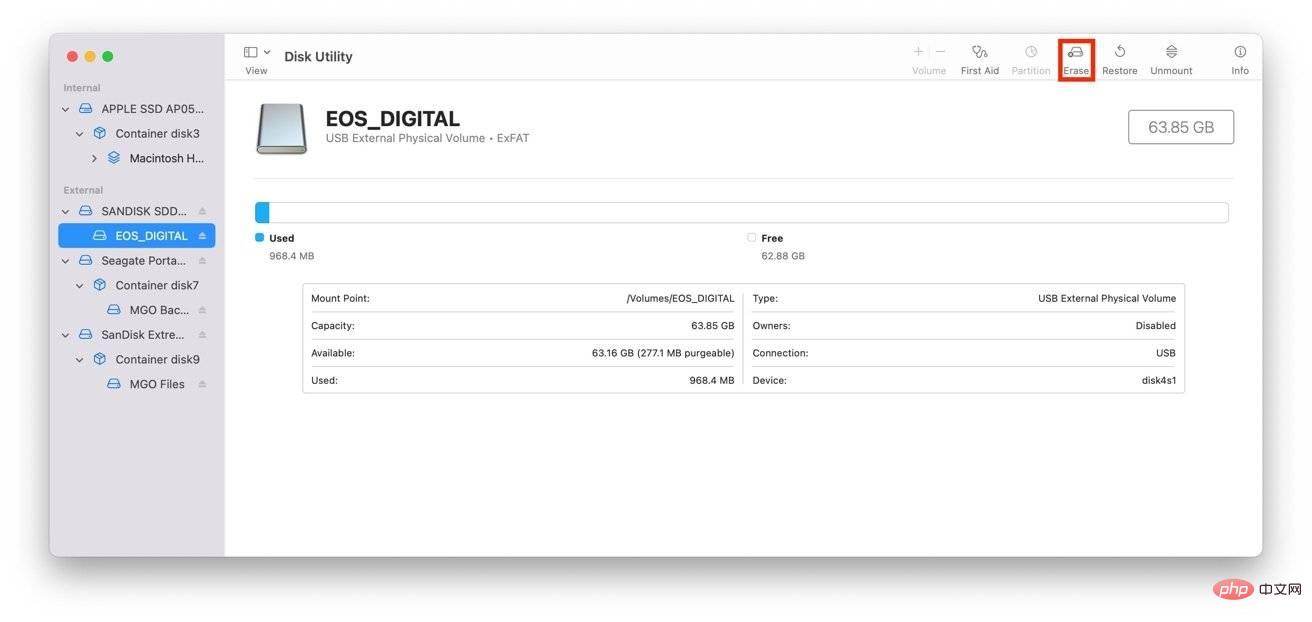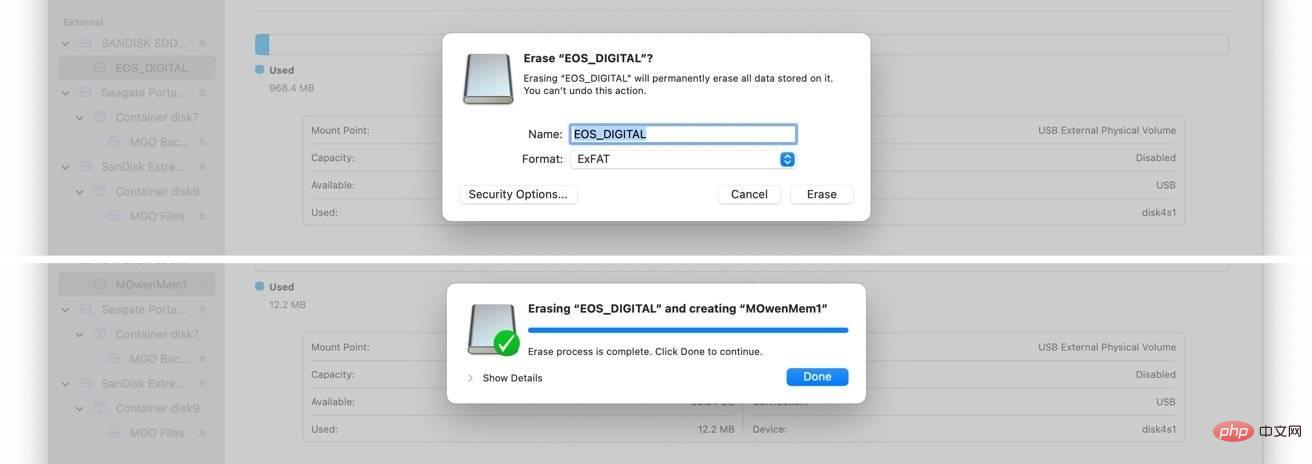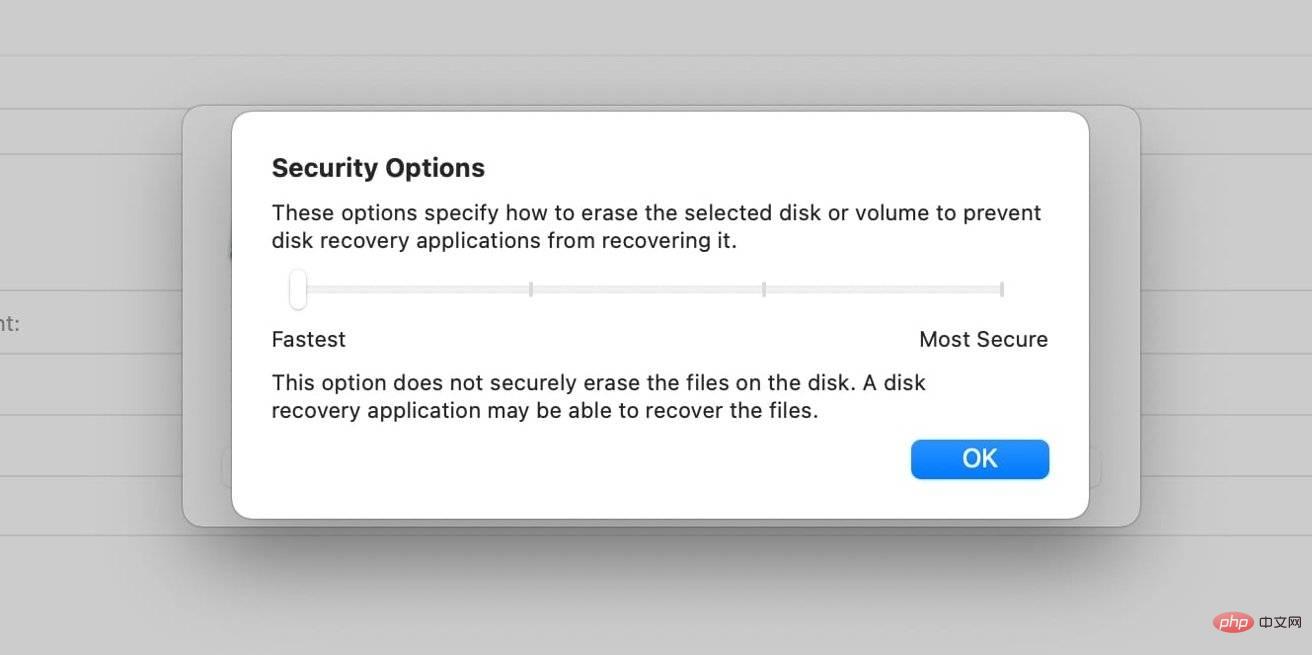How to format SD and microSD memory cards in macOS
If you are a keen photographer, you probably have a lot of memory cards that need to be wiped. Here's how to safely format SD and microSD cards in macOS.
One of the problems with separating your camera from your iPhone or iPad is that you have to deal with the memory card. Over time, photographers tend to accumulate collections of SD cards and microSD cards, often filled with images and videos that they haven't deleted yet.
Most people don’t bother cleaning up the card after the photos have been removed from the card and stored in other media, such as cloud-connected apps like Apple’s Photos app. Instead, they tend to wait until they need an empty memory card and then format it in the camera before using it.
Why should you format your memory card regularly?
Cleaning your memory card should be a regular occurrence and should be done every time you are sure you no longer need any photos on the card.
If you take a lot of photos and use multiple cards between occasions when offloading images to your Mac, you'll often run into the problem that once a card is filled, you should Determine which cards should be used next. If you don't format and completely erase your memory card regularly, you'll have to spend a few minutes formatting the storage with your camera.
 If you travel with your camera, you may burn out multiple memory cards, especially on long trips.
If you travel with your camera, you may burn out multiple memory cards, especially on long trips. This doesn't sound too bad until you consider the situation where you simply don't have time to set up a new card. This includes special events such as weddings or sports, where preparations must be made as quickly as possible.
The second reason is related to this multi-card scenario, because if you format a previously used card when you are about to use it, you may make a mistake. You might mistakenly start formatting a card that you think is safe to erase but contains images that haven't been copied to your Mac or otherwise stored.
In a professional environment, this can be a costly mistake.
There is also the privacy aspect of memory card hygiene.
If the worst happens and someone steals your bag with a memory card, and you don't format the memory card regularly, the thief could have hundreds of thousands of photos in his possession. If they wish, they can see all images and associated metadata, which can be disruptive depending on the type of photography.
If you share your memory card with others, it also eliminates the chance of them seeing embarrassing or similar content on the card.
In short, once you've ingested your data to whatever storage or editing platform you're using and backed it up, wipe your memory card.
Why format on Mac?
While you can format cards in your camera without a doubt, it might be much easier to do it on a Mac for a few reasons.
First of all, if you do this immediately after getting the data, the card is already in the card reader and ready to be formatted. Second, it's cumbersome to put the card into the camera and navigate its menus to format the card, which is probably harder to do than via a Mac.
 Use Disk Utility in macOS to format your memory card.
Use Disk Utility in macOS to format your memory card. If you have a bunch of memory cards that you want to wipe all at once, it might be easier to just slide them into the memory card slot and change a few settings on your Mac. There's certainly more to it than just closing the camera, opening the flip, ejecting the old card, inserting the new card, closing the flip, turning the camera on, waiting for it to boot, and then navigating the menus.
This is a cleaner process, especially when dealing with large numbers of cards.
Format Memory Card
The process of formatting a memory card on macOS is simple and is essentially similar to formatting a hard drive. It's the same process, but with a few minor adjustments.
 Choose a good relevant name for the memory card.
Choose a good relevant name for the memory card. How to format a memory card in macOS
- Insert the SD card or microSD from the adapter into a card reader.
- Wait for it to install on your Mac and note the name of the card.
- Open Disk Utility. It's available through the Applications folder in the Utilities subfolder, or you can use Spotlight search to open it by name.
- In Disk Utility's sidebar, search for your memory card and select Volume. Typically you'll find it under the memory card manufacturer's name, with a volume title that matches the drive name when it was installed, and the matching capacity.
- Once you are sure you have selected the correct volume, click Erase.
- Enter the name of the memory card.
- Select the format of the memory card. Typically, this will be MS-DOS (FAT) for a 32GB or lower memory card, and MS-DOS (FAT) for a 64GB or larger memory card.
- Click Erase
- When finished, click Finish.
Security Options
Going through the erasing process, you will most likely find a button labeled "Security Options." Selecting it brings up a slider and offers a way to safely format the memory card.
 You don't necessarily need to use the security option as it is more suitable for hard drives, not memory cards.
You don't necessarily need to use the security option as it is more suitable for hard drives, not memory cards. If you want to wipe data more securely with random data overwriting, you can adjust the slider under Security Options to the right. This is useful if the previous data on the card contains images or photos that you really don't want other people to see.
However, please remember that memory cards and SSDs have a limited write life. Being too cautious may shorten the life of your card, but depending on your situation, it may be worth it.
After all, replacing an SD card is relatively cheap. Your privacy is not.
Another option: SD Memory Card Formatter
Using Disk Utility is not the only way to format a memory card, as there are several other options available online. Arguably the best third-party application you can use is SD Memory Card Formatter.
The SD Memory Card Formatter is published by the SD Association (the group of companies that create the standards used by SD card manufacturers) and is a tool that adheres as closely as possible to the association's standards.
For users who are intimidated by Disk Utility, the SD memory card formatter may be a good choice for several reasons. First, it can figure out that the storage you're connecting to is an SD card, minimizing the chance of formatting another volume.
It will also determine the correct file system for the volume you are about to format, eliminating another decision in the process. It's also a simple app, consisting of a single screen and relatively minimal controls.
The above is the detailed content of How to format SD and microSD memory cards in macOS. For more information, please follow other related articles on the PHP Chinese website!

Hot AI Tools

Undresser.AI Undress
AI-powered app for creating realistic nude photos

AI Clothes Remover
Online AI tool for removing clothes from photos.

Undress AI Tool
Undress images for free

Clothoff.io
AI clothes remover

Video Face Swap
Swap faces in any video effortlessly with our completely free AI face swap tool!

Hot Article

Hot Tools

Notepad++7.3.1
Easy-to-use and free code editor

SublimeText3 Chinese version
Chinese version, very easy to use

Zend Studio 13.0.1
Powerful PHP integrated development environment

Dreamweaver CS6
Visual web development tools

SublimeText3 Mac version
God-level code editing software (SublimeText3)

Hot Topics
 1387
1387
 52
52
 No response when entering password on mac keyboard?
Feb 20, 2024 pm 01:33 PM
No response when entering password on mac keyboard?
Feb 20, 2024 pm 01:33 PM
Introduction: In this article, this website will introduce to you the relevant content about the Mac keyboard not responding when entering passwords. I hope it will be helpful to you, let’s take a look. How to solve the problem that the password cannot be entered on the Apple Mac system? You can also try to connect this keyboard to other computers to see if it works normally. If the same problem occurs on another computer, it's most likely a fault with the keyboard itself. You may consider replacing the keyboard or repairing it. The first time you log in to Alipay with your Mac computer, you will find the login interface and cannot enter your password. The password input field displays: "Please click here to install the control", so Alipay login requires the installation of security controls. Security controls can encrypt and protect the information you enter (amount, password, etc.) to improve account security. Tie
 3 tips to easily customize your Mac computer name, host name and Bonjour name
Mar 06, 2024 pm 12:20 PM
3 tips to easily customize your Mac computer name, host name and Bonjour name
Mar 06, 2024 pm 12:20 PM
Many Mac users tend to keep the default name of their device and may never consider changing it. Many people choose to stick with the name from the initial setup, such as "Johnny's MacBook Air" or simply "iMac." Learning how to change the name of your Mac is a very useful skill, especially when you have multiple devices, as it can help you quickly distinguish and manage them. Next, we will teach you step by step how to change the computer name, host name and Bonjour name (local host name) in macOS system. Why should you change your Mac name? Changing the name of your Mac can not only show your personality, but also help improve the user experience: Personalize your Mac: The default name may not be to your taste, change it to a name you like.
 Forgot your mac installer password?
Feb 20, 2024 pm 01:00 PM
Forgot your mac installer password?
Feb 20, 2024 pm 01:00 PM
Introduction: In this article, this website will introduce to you the relevant content about forgetting the password of the Mac installation program. I hope it will be helpful to you, let’s take a look. What to do if you forget your password for Apple computer installation software. First, find iCloud in the phone settings and click to open it. Next, enter your account number and password. There is a line of small words below the login button that prompts you if you have forgotten your ID or password. Click this option. Normally, after you enter an incorrect password multiple times on the login interface, your MacBook Pro will prompt you to use your bound Apple ID to reset your password. You only need to follow the steps prompted by the system to complete the password reset. 3. First shut down your Mac, then restart it. While pressing the power button, immediately press and hold com on the keyboard.
 pkg file to install on mac?
Feb 20, 2024 pm 03:21 PM
pkg file to install on mac?
Feb 20, 2024 pm 03:21 PM
Preface: Today, this site will share with you the relevant content about installing pkg files on Mac. If it can solve the problem you are facing now, don’t forget to follow this site and start now! The previous version of macos pkg cannot be installed to upgrade the operating system: If your laptop is using an older operating system version, it is recommended to upgrade to the latest operating system version. Because older versions may not support installation of the latest macOS system. Select "Erase" in Disk Utility, then select the Macos extension in the format, do not check the encryption option, and do not select the apfs format, and finally click the "Erase" button to solve the problem of being unable to complete the macOS installation. Drag the application's icon to the file starting with App
 How to turn pages when typing on Apple Mac?
Feb 20, 2024 pm 12:54 PM
How to turn pages when typing on Apple Mac?
Feb 20, 2024 pm 12:54 PM
Introduction: Today, this site will share with you relevant content about how to turn pages when typing on Apple Mac. If it can solve the problem you are facing now, don’t forget to follow this site and start now! Tips for using the touchpad on Apple MacBook laptops. The steps for setting up two-finger sliding on Apple computers are as follows: Find the "Settings" icon on the computer desktop and click it. Select "Touchpad" in the settings interface, and then click "Scroll to Zoom". Check "Scroll direction: Natural" in the scroll zoom options to complete the setting. Setting up a two-finger swipe method on your Apple computer is easy. First, turn on your computer and click on the Settings icon at the top of the screen. In the settings interface, select the "Touchpad" option. Then click "Scroll Zoom" and make sure "Scroll Direction" is checked
 Can Mac cut files to hard drive?
Feb 20, 2024 pm 01:00 PM
Can Mac cut files to hard drive?
Feb 20, 2024 pm 01:00 PM
Introduction: This article is here to introduce you to the relevant content of cutting files to the hard disk on Mac. I hope it will be helpful to you, let’s take a look. How to Export Photos to a Mobile Hard Drive on a Mac Computer You can use the Finder or Photos application to export photos to a mobile hard drive. When using Finder to export photos, first make sure the mobile hard drive is connected to the Mac and is successfully recognized by the Mac. The steps to transfer photos from Mac to hard drive are simple: first, connect the mobile hard drive to the computer, and then open the [Launcher] icon. Then, find and click the [Photos] icon in the pop-up window. In the opened [Photos] window, hold down the [Shift] key
 How to set up WeChat Mac to automatically convert voice messages into text - How to set up voice to text conversion
Mar 19, 2024 am 08:28 AM
How to set up WeChat Mac to automatically convert voice messages into text - How to set up voice to text conversion
Mar 19, 2024 am 08:28 AM
Recently, some friends have consulted the editor about how to set up WeChat Mac to automatically convert voice messages into text. The following is a method for setting up WeChat Mac to automatically convert voice messages into text. Friends in need can come and learn more. Step 1: First, open the Mac version of WeChat. As shown in the picture: Step 2: Next, click "Settings". As shown in the picture: Step 3: Then, click "General". As shown in the picture: Step 4: Then check the option "Automatically convert voice messages in chat to text". As shown in the picture: Step 5: Finally, close the window. As shown in the picture:
 3 Ways to Convert HEIC Photos to JPG on Mac
Mar 15, 2024 pm 08:43 PM
3 Ways to Convert HEIC Photos to JPG on Mac
Mar 15, 2024 pm 08:43 PM
By default, iPhone takes photos from the camera in HEIC format. HEIC stands for High Efficiency Image Container and can hold more pixel data than PNG or JPG files, taking up significantly less space on iPhone storage compared to other formats. These files work best on iPhones but are not widely accepted on the internet because they often result in blurry/grainy pictures when you share them with non-Apple devices. To ensure that HEIC images are compatible on other devices, you may need to convert them to JPG format. This article will introduce how to convert HEIC images to JPG on Mac. How to Convert HEIC Photos to JPG on Mac [3 Methods] Method



